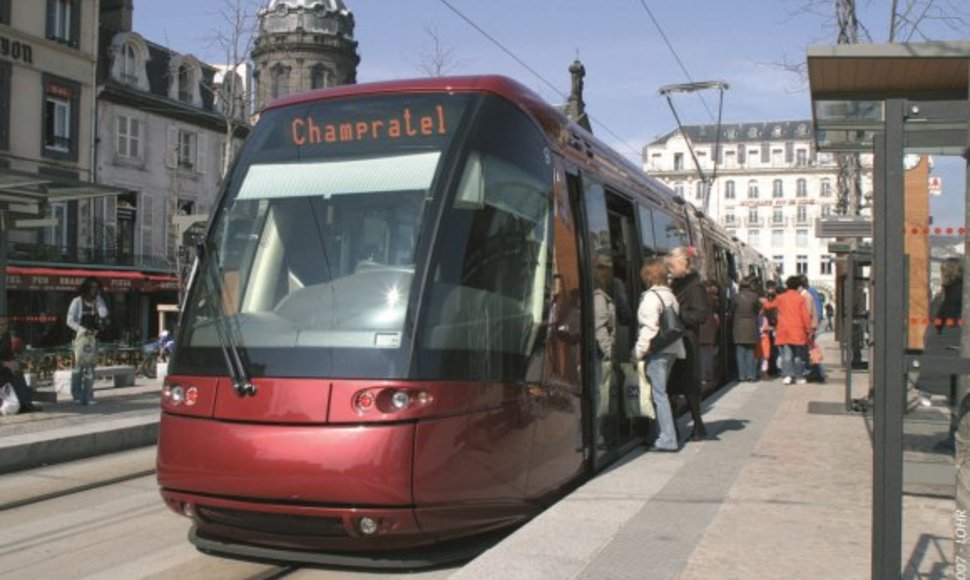The biggest problem is that Vilnius residents – Vilnians, if you will, – live in scattered neighbourhoods, that are rather removed from one another, and move around in their own cars.
A three-town city
Lately, there has been neither increase nor decline in the population of the Lithuanian capital that stands at around 550 thousand. But, according to specialists' estimates, “true” Vilnians are much more numerous – about 700 thousand. The “true” residents include those living in smaller villages surrounding Vilnius – Maišiagala, Nemėžis, Rudamina, etc. – but commuting to work in town.
Vilnius is fast approaching the American city model. But do we really want to live in an American-style city, where streets have no sidewalks and you need to take a car everywhere?
Mindaugas Pakalnis, chief architect with the municipal agency “Vilniaus planas,” says that the city of Vilnius in fact contains within itself three distinct cities. One of them is the central part – a historic European town with an intricate street network and wonderful old-town architecture.
“This is Vilnius as it was until late 19 century. Starting with around mid-20 century, the city has undergone structural changes, new ferroconcrete residential blocks sprung up, built on an ideology of separating industrial and residential areas. People were supposed to live in nice environments, while working in polluted factories,” Pakalnis says.
Looking from today's perspective, the ideology seems flawed as it segments the town, obliging people to move a lot – commute to work, take kids to school, go to shops, return home in the evening. Much of this traveling is done in cars.
American city
In recent years, a third part of Vilnius has gone through significant growth – suburban settlements with no clear structure, no public spaces, schools or kindergartens. According to Pakalnis, such settlements are the biggest problem that Vilnius faces, as it reduces population density in central areas, influencing bank decisions on financing infrastructural projects.
“For example, in Paris, at about 24th kilometer from the centre, the population density is only about 30 people per hectare. Riga reaches this density at 12th kilometer. Vilnius, meanwhile, which is rather similar to Riga, has the population density drop below this mark at 6th kilometer. We have many green areas, which is an advantage, but it means that Vilnius residents have to pay more for infrastructural development,” Pakalnis explains.
Vilnius sports a population density similar to other European cities only in the immediate area around Gediminas avenue. As one moves further, density drops sharply. Even the central New Town district is much more scarcely-populated.
“Vilniaus planas” chief architect refers to a classification by urban researchers. They distinguish between American cities with low population density; European cities with mid-range density; and extremely dense Asian cities. American cities have, on average, about 22 residents per hectare, Asian cities – over 100.
The figure in Vilnius currently stands at 29 residents per hectare – one of the lowest in Europe. “Vilnius is fast approaching the American city model. But do we really want to live in an American-style city, where streets have no sidewalks and you need to take a car everywhere? Let's not forget that in America, gas is much cheaper,” Pakalnis says.
He is convinced that Vilnius should stick to its general plan and develop its main centre as well as five peripheral centres, connecting them with good transportation links. According to American urbanists, if a town's population density is below 25 per hectare, then public transportation system is inefficient and requires subsidizing. Therefore, in order to render Vilnius public transport efficient, people have to move to the city centre instead of choosing to live in the suburbs.
“We should also concentrate city development around those corridors that will become routes of the new transport. And we should not fear the urban consolidation boogie that came up 5-6 years ago. This is the only way of making the new means of public transport efficient and, perhaps, in 30-40 years we will have passenger flows that could sustain a metropolitan railway,” Pakalnis thinks.
Metro unsustainable
Another important strategic direction is to try and change people's habits, make them switch from individual cars to public transport. Some of the ways that could help achieve that – higher parking rates and smaller lots outside most visited sites.
“Another issue is continuity of municipal projects. I can remember a period where the town was almost ready to build a tram line. But the political administration changed, new challenges arose and the project was forgotten. Five years later, and we have the exact same situation, only worse. Young people are moving to suburbs and don't use public transportation,” Pakalnis regrets.
So far, however, the city authorities have not decided on whether to build a tram line. However, this is seen as the most probable new means of transportation, as metro would be too expensive an option. According to estimates, one kilometer of metro line would cost about 100 million litas to build. Besides, metro is only efficient if it transports at least 10 thousand passengers an hour.
“If we're talking about a metro line from Pilaitė to the city centre, let's count. There are 10 thousand residents in Pilaitė and the metro needs 10 thousand passengers an hour. That means that the entire population must go to the city centre in one hour and then return the next,” Pakalnis says.
Tram with rubber wheels
A French company TransLohr has presented a tram that it claims would be just perfect for Vilnius. People responsible for creating a public transport development strategy for the city, too, agree that tram is the optimal new means of transport. City authorities, meanwhile, have not presented their vision yet.
According to Marija Burinskienė, professor at Vilnius Gediminas Technology University and head of Municipal Public Transport Group, there is a possibility of building six tram lines in Vilnius. One of them would run from Santariškės district to the Railway Station and would take up to 5 thousand passengers during rush hours. Another line would connect the Station to the Ukmergė street roundabout.
TransLohr has offered a monorail tram with rubber tires. To build a monorail track would cost about 30 million litas per kilometer. It took one year and a half to install a monorail tram line in Padua, Italy. Producers of rubber-wheeled trains claim that this means of transport is resistant to changeable Lithuanian winters. It was installed in Clermont-Ferrand, one of the the coldest towns in France, and trams were operating in winter without interruption.













